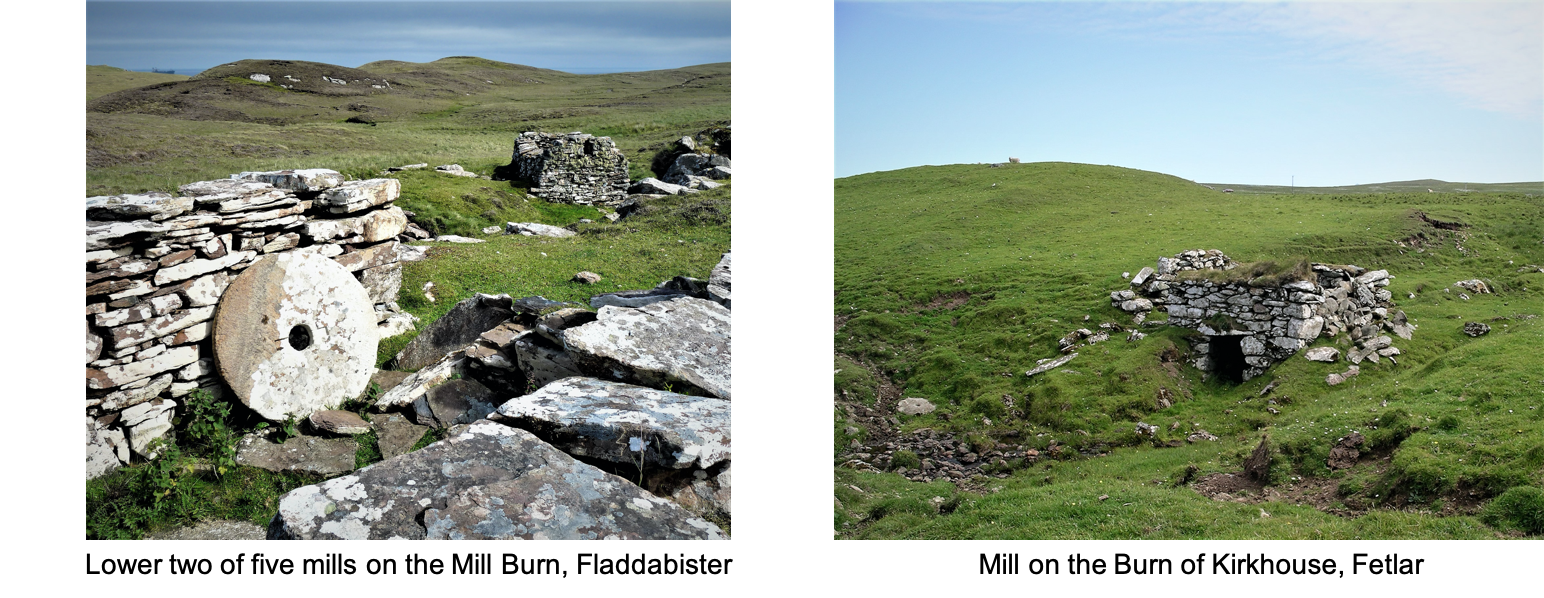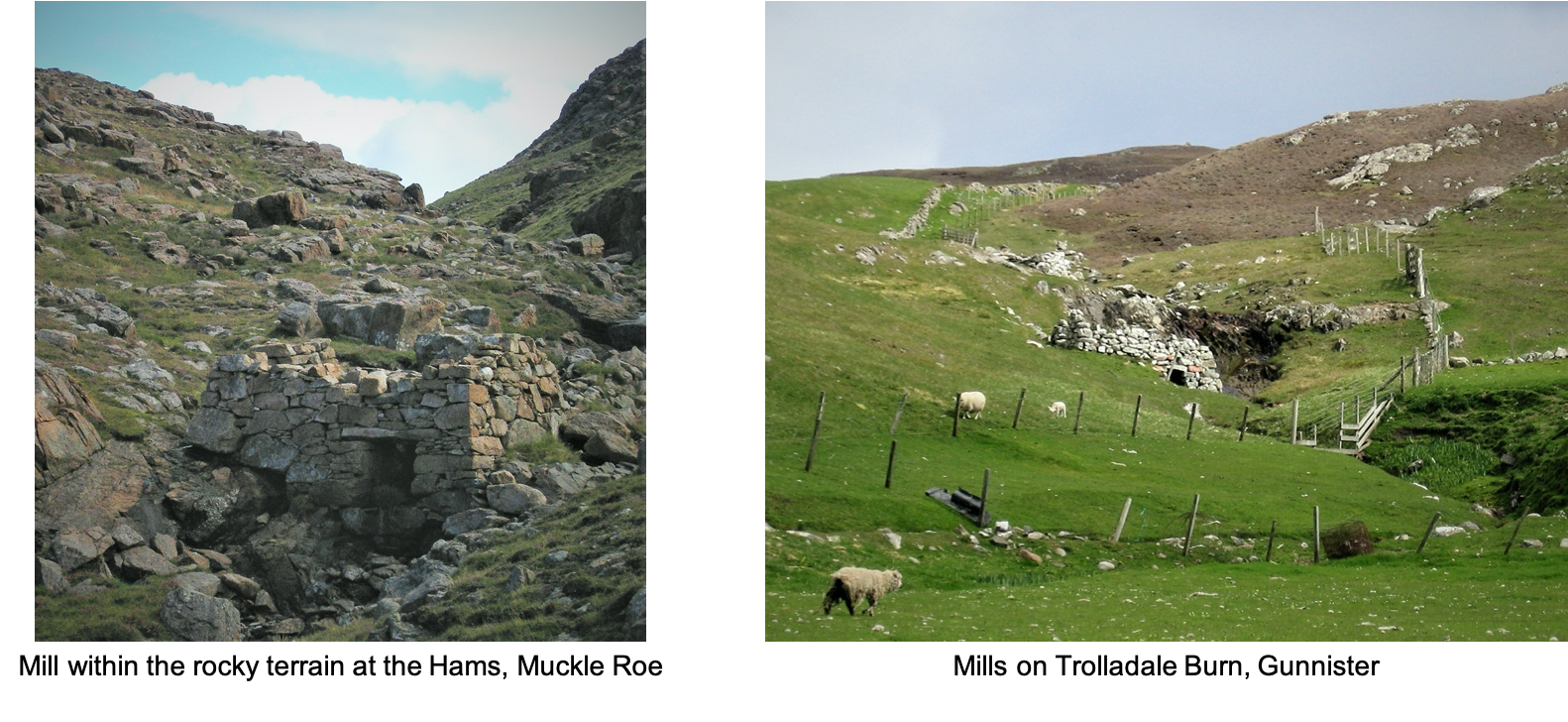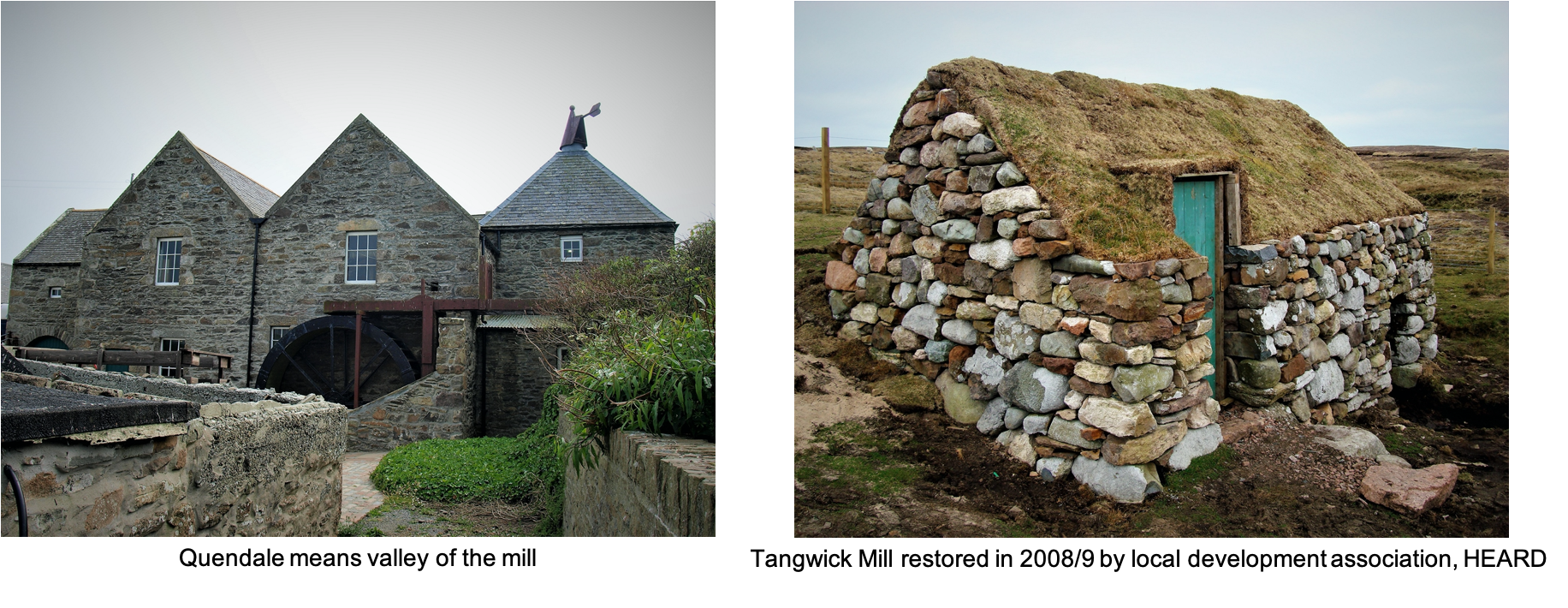Place-name of the week – Mills
Shetland’s horizontal watermills are often referred to as Norse mills as they were introduced here by the Vikings, but their origins lie in Ancient Greece. Old Norse kvern (quern) and mylna (mill) place-names point to where early mills were located; the former being most common in the forms hwen, kwen and quen. Examples include Da Burn o Hwenjerhul, Hweinbregg, Hwenjali, Quinetiptens, Kwenjara Burn, Quenister and Quendale.
Mill place-names point to mills built during the 18th and 19th centuries, often by groups of 5-6 families. Many are some distance from the township, where a burn flowing out of a loch made it easier to control the flow of water by damming. Where there was no loch, a man-made millpond was dug out. A shortage of water on the rocky hillside at Miljaskerna in Norwick led to the creation of a mill pond, dammed to release water to mills next to Millfield.

Many mills have been plotted and photographed as part of Shetland Amenity Trust’s work on collecting Shetland place-names, and a staggering 800 Shetland mill sites recorded and mapped by the late Prof Derek Flinn; his maps and database are now available in the Shetland Archives. Many mills are un-named, but some give details of the person or croft to which they belonged. The Mill of Stove and Mill of Houston are in Haroldswick, Robert Peterson’s Mill is on the Burn of Croowater in Fetlar, and Bob’s Mill and Adie’s Mill are located on Stromness, Whiteness.

Several mills could be situated along a single burn, with the highest numbers being 9 at Scousburgh, 10 at Clumlie and 11, including the Vaadal Mill, Pund Mill, Leogh Mill, Shuny Mill and Shirva Mill, on the Burn of Gilsetter in Fair Isle. Papa Stour once had 24 mills. Many mills have now fallen into disrepair with the stones reused and sites often growing over, like the one on Gilsa Burn in Otterswick. Careful restoration has preserved mills at the Croft House Museum in Boddam, Burland in Trondra, Huxter in Sandness and Tangwick in Eshaness. The latter, built in 1829, is linkd with the sjöpiltie or njuggle, a mythical water horse, which hid under watermills stopping them working by holding onto the tirl (wheel). Any unsuspecting person who mounted the seemingly friendly horse, was quickly plunged to their death in the nearest water. The place-name Sjöpiltie’s Hol is preserved in the cliffs just south-west of Tangwick.
Like wells, mills were recorded on the early ordnance survey maps, but can also be located by adjacent named features, most commonly Mill Loch and Mill Burn – examples include at Saltwick in Yell, Hamnavoe in Eshaness, Collafirth in Delting, Stapness and Bardister in Waas and Stromfirth where Tirsa Water on the map is locally known as the Mill Loch, and Mill Burn runs into the Loch of Strom.

There were, of course, other mills in Shetland. Shetland’s three large vertical mills at Girlsta, Weisdale and Quendale handled the grain from a very wide surrounding area. Quendale mill was built in the 1860s and operated until 1948. In Lerwick, Robert Tait named the road between his steam sawmill and the blacksmith’s shop, Mill Lane, giving another snapshot into the past. As with all place-names, you need to look at the environs and history to verify the meaning.
If you can locate and photograph any mills near you, and have stories about people or animals associated with them, please email placenames@shetlandamenity.org
Eileen Brooke-Freeman, Place Names Expert
We hope you have enjoyed this blog.  We rely on the generous support of our funders and supporters to continue our work on behalf of Shetland. Everything we do is about caring for Shetland's outstanding natural and cultural heritage on behalf of the community and for future generations. Donations are welcomed and are essential to our work.
We rely on the generous support of our funders and supporters to continue our work on behalf of Shetland. Everything we do is about caring for Shetland's outstanding natural and cultural heritage on behalf of the community and for future generations. Donations are welcomed and are essential to our work.

